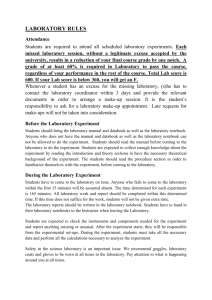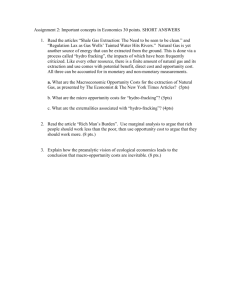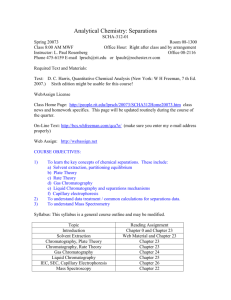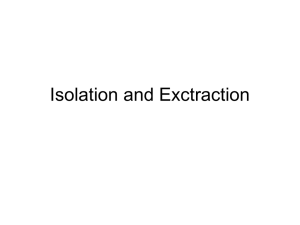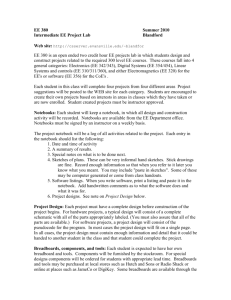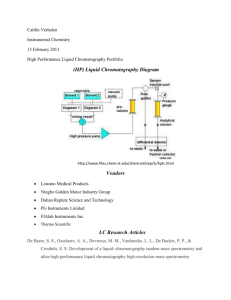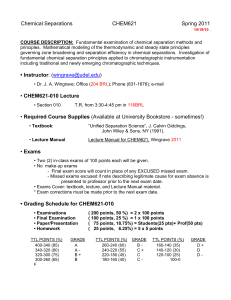Lecture 1
advertisement
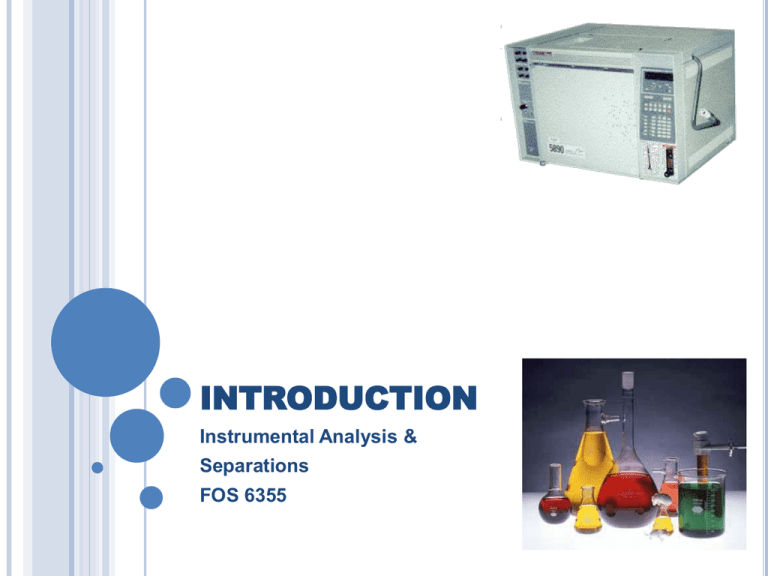
INTRODUCTION Instrumental Analysis & Separations FOS 6355 TOPICS There are basically two types of analysis: Qualitative - What is in the sample? Quantitative - How much is in the sample? TOPICS This course will be focusing on Quantitative Analysis. Qualitative infrared spectroscopy NMR Mass Spectrometry TOPICS This course will focus almost exclusively on chemical analysis and separations using chromatography. HPLC - High Performance Liquid Chromatography GC - Gas Chromatography GRADING POLICY Three Exams (3 x 150 pts……….450 (45%) Three Papers (4 x 25 pts)……….100 (10%) Homework (2 x 25 pts)...................50 (5%) Lab Notebook & Lab Reports (9)…………………..400 (40%) TOTAL……………………………1000 (100%) PAPERS You will need to search for a research article on the four subject areas we will be studying. Extraction/separation (microwave assisted extraction; supercritical extraction, ultrasound extraction, etc.) Spectroscopy (Raman, IR, NMR, etc.) Chromatography Gas Liquid You will select an article relating the topic to food science and write no more than a two page summary of the article. Note, the article does not have to be entirely about the subject but it should be majorly used as the analytical tool in the article. LECTURE AND LAB TIMES Lecture will be from 11 am to 12:30 pm on Tuesdays and Thursdays For the the first few weeks of the semester, lecture will be extended and we will not meet for lab. http://lss.at.ufl.edu http://fshn.ifas.ufl.edu/faculty/mrmarshall/ LECTURE AND LAB TIMES Labs are scheduled for Tuesday and Thursday from 12:30 pm and going until 5 pm. However, labs may take more on less time than the scheduled time. Not all groups will be able to perform certain labs during the regularly scheduled times, therefore, it will be necessary for some groups to schedule alternate lab hours for some experiments. LAB REPORTS & HOMEWORK Formal lab reports are required This means that they must be type-written and follow the specified format Homework may be hand-written LAB NOTEBOOKS 1. 2. 3. All entries will be written in blue or black ink Errors will be crossed out with a single line and the correct entry added next to the crossed out entry Reserve the first 3 pages for the table of contents • 4. Keep the table of contents up to date Each page in your notebook will be signed and dated by you after entries on that page are completed. LAB NOTEBOOKS (CONT.) 5. 6. 7. 8. If you wish to begin a new section, insert a large table, or begin a new experiment on a new page without completely filling the previous page, make a diagonal line across the blank section of the page Chromatograms or other computer output should be taped into the notebook in an appropriate place Lab partners need to insert the required chromatographs Have your lab partner sign your notebook after an experiment is completed
